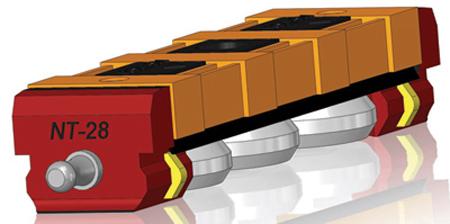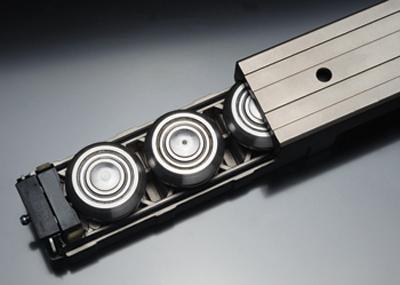Reducing Linear Bearing Wear
March 1, 2012

To get the longest working life out of a linear bearing, keep it clean and well lubricated. This commonsense advice may sound easy enough to follow, yet in the real world of round-the-clock, high-cycle manufacturing operations, bearings do get dirty and dry.
And when either of these conditions happens, linear bearings will wear prematurely. In the worst-case scenarios, contamination and inadequate lubrication can create metal-on-metal contact between the bearing's rolling elements and raceway. This can cause excessive wear in the form of denting, pitting, or galling.
This warning about contaminants and the importance of lubrication will not come as news to anyone who has designed or worked around industrial machines. When using linear guides on medical, food, packaging, semiconductor, or other sensitive equipment, machine builders often take extraordinary measures to keep the contaminants out and the oil in. They may add expensive bellows to cover the guides, or they may opt for a pricey automatic greasing system.

Yet in their zeal to keep linear motion systems running smoothly, machine builders can overlook less expensive design solutions to contamination and lubrication issues.
Combating contamination
Contamination comes in many forms, some more aggressive than others. Metal chips from machining operations, for example, qualify as one of the biggest offenders from a wear perspective. Silicon dust produced during semiconductor manufacturing can also be tough on linear bearing surfaces. Modern manufacturing processes can throw off a long list of other abrasive, wear-inducing contaminants.
About the Author(s)
You May Also Like





